In the urban forests of Atlanta, we’re all too familiar with the overgrown understory of ivy, privet, wisteria, and kudzu (and the list gooooeeeeessssss on) and the subsequent CRAZY mosquitoes that ensue during summertime. I don’t know about you, but when I walk outside in the summer, I am greeted with a swarm, and then red welts seem to dot my legs and arms for months on end.
I want to share my personal experience with utilizing goats to clear the understory (mentioned above) of the forest surrounding our house, how that has helped with mosquitoes, and how we intend to continue the process now that they are gone.
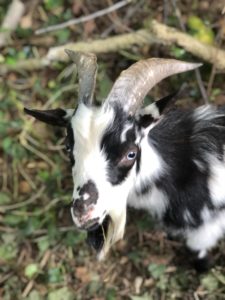
Here’s the catch: we didn’t actually own any of the land we wanted to graze goats on, but that didn’t stop the ivy and mosquitoes (who don’t generally respect arbitrary property boundaries). So, we worked out a partnership with our neighbors on two sides: the City and one a private resident.
Here’s what we were working with:
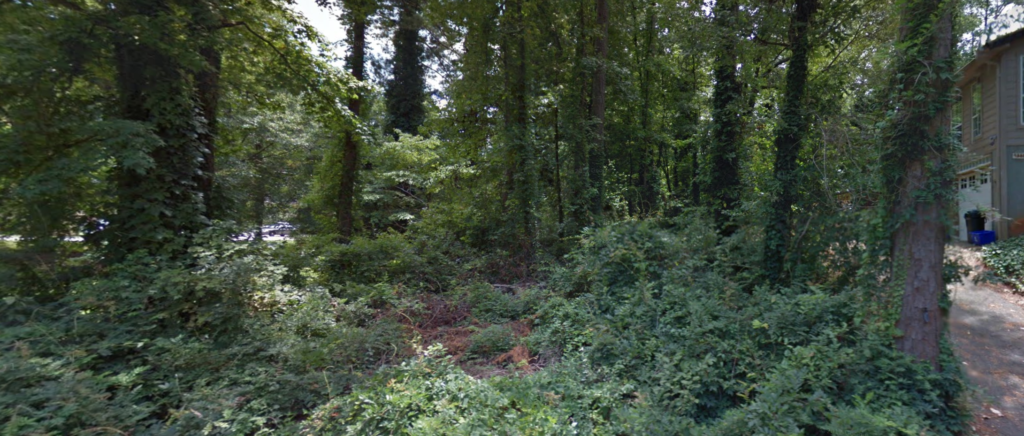
Side yard, City-owned park
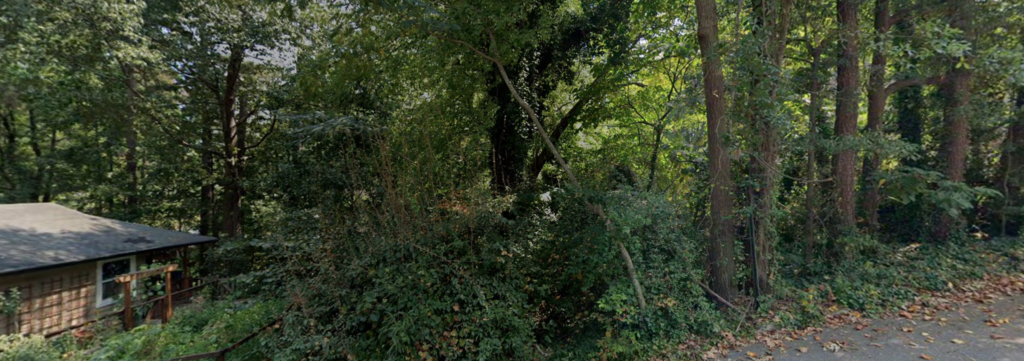
Forest between our house and our neighbor
Here are a couple of frequently asked questions about having goats clear land:
Are they going to harm the native, tender ephemerals?
Spring ephemerals, such as many woodland native plants, have a pretty short above-ground life, with much of the year spent dormant after a quick flowering and seeding in early to late spring. But here’s the catch: in forest floors dominated by aggressive or opportunistic species, especially English ivy, which outcompetes most plants with its winter evergreen photosynthesizing, there isn’t a ton of species diversity ABOVE GROUND. However, clearing some space on the forest floor makes room for the diverse seed bank just below the soil surface to finally express! So, while the goats may eat some species during their forest tenure, you are creating the conditions for way more diversity in the long run.
Won’t the aggressive species just grow back?
Absolutely. This is where it is beneficial to examine how utilizing grazing, and browsing ruminants (4-stomached ones) mimics a pattern seen in natural systems. In a balanced ecosystem, herbivores “pulse graze” naturally by wandering and revisiting a site along their migratory paths periodically. This creates ecological pressure, meaning the plants have natural predation, and the populations are in balance. Much of the ecological pressure has been removed in an urban forest because a)herbivore populations are limited in cities and b)the plants are out of context and have no natural predators.
So, working with this idea of creating ecological pressure, you could choose to clear the forest understory in 2 ways. 1) Work with the pulse grazing model, and graze the goats periodically until the aggressive species use up all of their root energy trying to sprout new leaves. This needs to be done regularly enough to keep the plants from rebuilding root sugar stores through photosynthesis, meaning they’ll need to be grazed again and again, pretty soon after they sprout new leaves. If you have a large tract of forest, you may have enough space to go ahead and get your own goats and move them around (I’ll save that how-to for another post). But most folks would likely use a goat rental company like we did. We went with Pygmy Goat Folx, and Scott and Maggie Nesbit, the founders, are just incredible humans. Their herd is composed of forgotten and forsaken billies that they have rescued and put to good use helping manage our urban forests.
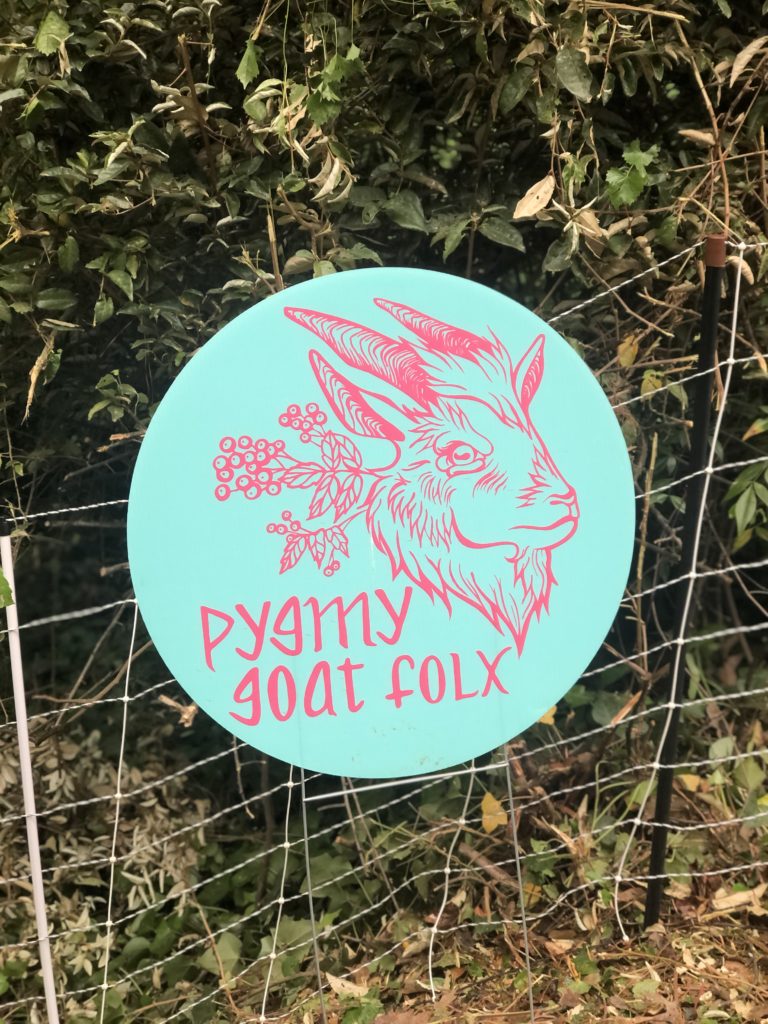
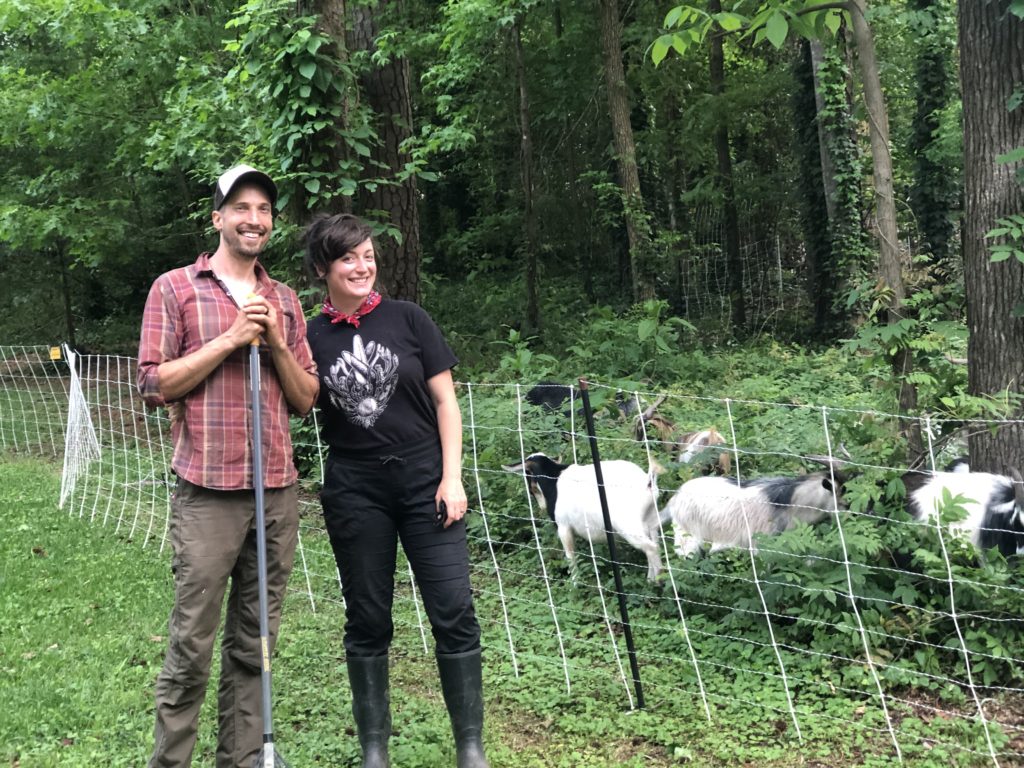
Scott, Maggie, and their billies
So, that brings me to the third question.
Isn’t it expensive?
Yes, and no. It really depends on how you define “expensive.” If you were to graze repeatedly enough to defeat the ivy’s life force, yes. It could quickly become costly. But maybe the goal isn’t complete annihilation. Perhaps it’s balance. Also, traditional methods of “invasive removal” often involve copious amounts of herbicides, which lead to ecological annihilation, so I would argue that’s the most expensive route⏤the cost of life. But I’ll get off my soapbox now.
Speaking of balance, there’s also the option of a hybrid model: grazing and hand removal. That’s what we’re going with because it costs fewer dollars and because it will help accelerate the process. Once the goats clear the thick understory, it is surprisingly easy to get into the forest.
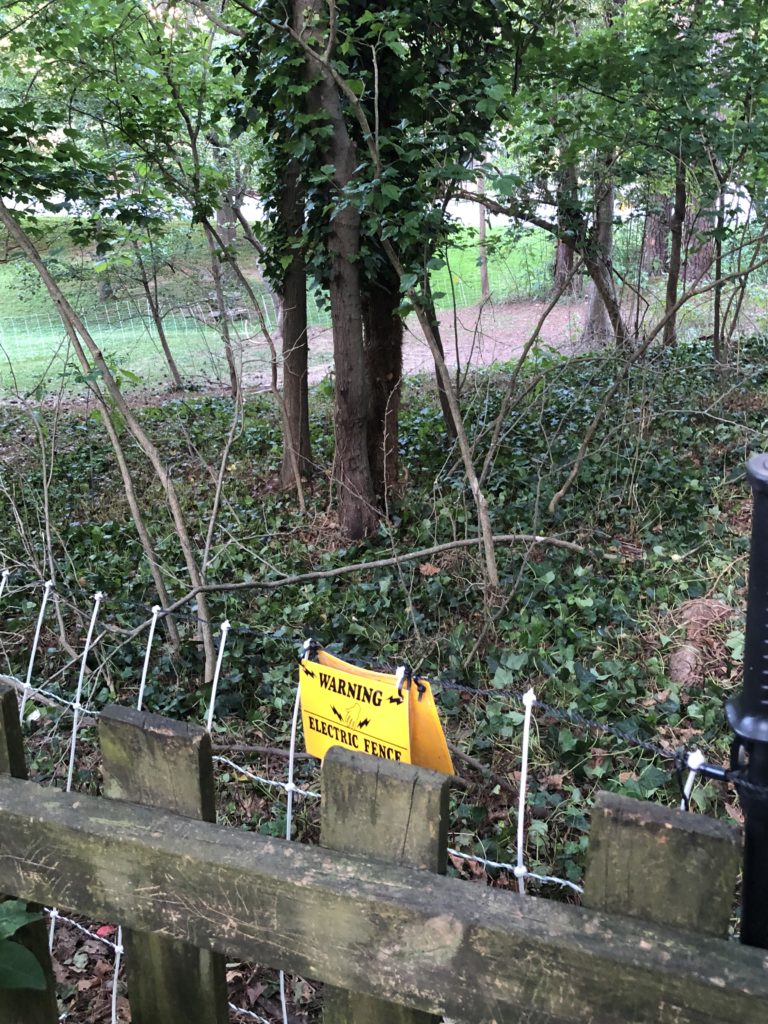
Solar-powered electric netting contains the goats and keeps predators at bay
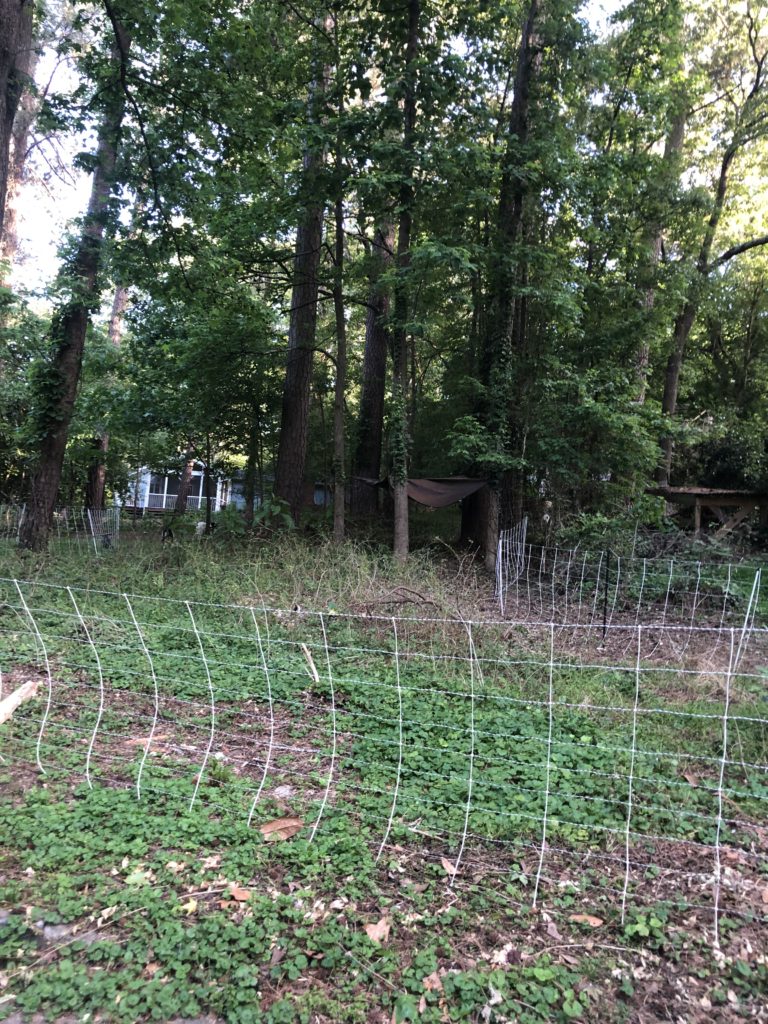
Street view, halfway through grazing
Our timeline has been as follows:
May 2021
The goats arrived and stayed for about 14 days. We supplemented their grazing with a little bit of hay provided by Pygmy Goat Folx. We set up a water trough fed by our hose and a tarp shelter between the trees (pictured above) to keep them dry. And that was it.
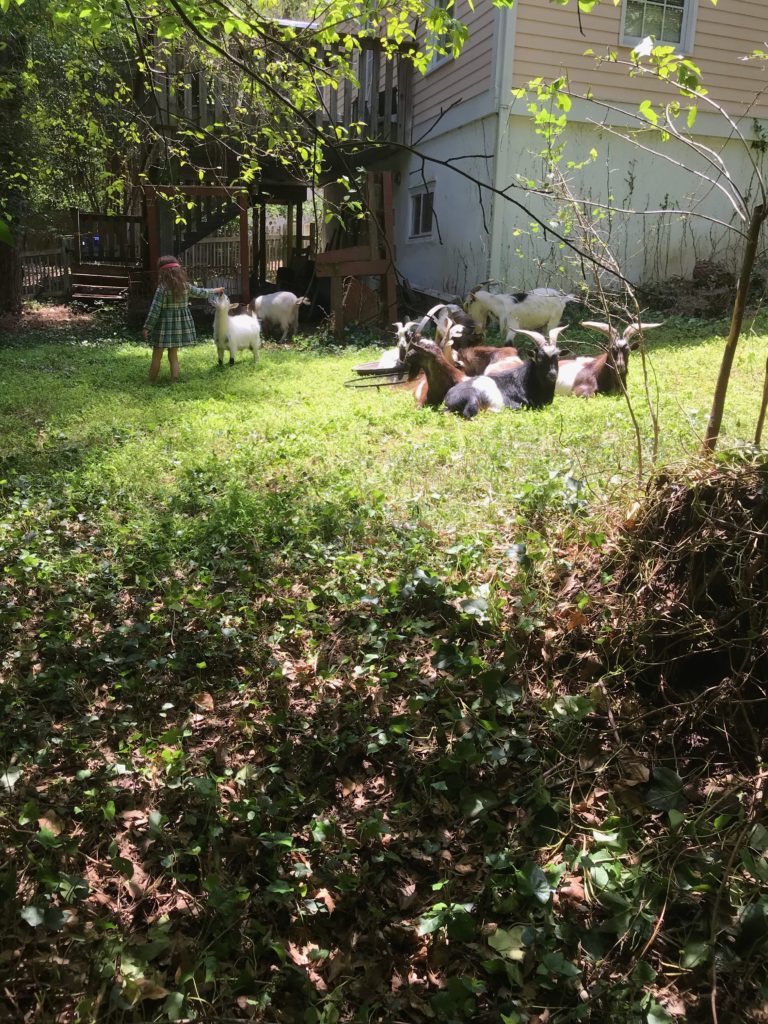
Oh, and my 4-year old is basically a goat whisperer. First thing in the morning, before the sun even woke up, she’d hop out of bed, put on her muck boots, and declare it time to feed the goats! Her favorite was clover, the smallest of the herd.
The benefit of having the goats in our forest in May was that we could cut off mosquito season before it could even take hold. Even though the foliage is growing back slowly, we have seen a remarkable decrease in our mosquito issue! Did you know that English ivy is a main breeding habitat for our most aggressive mosquito species? I’m working on another post ALL ABOUT natural mosquito control for this month, so stay tuned!
Fall 2021
We’ll have them visit again to clear any new growth once more.
Winter 2021
In the winter, we’ll get in and remove the ivy by hand. It’s actually relatively easy once the foliage is gone. You can use a machete and cut the vines from the earth, rolling the mat up like a carpet. And, likely beneath, you’ll find a thick layer of rich dark soil. Read more about Ivy’s ecological work here⏤it’s not all bad, and there’s a different way to think about plants that goes beyond imperial language and war mentality.
Spring 2022
We’ll observe what emerges from the dormant seed bank waiting patiently beneath the soil’s surface, and then begin to propagate and build the understory with ecologically-significant native and useful plants.
Thanks again to Pygmy Goat Folx for your wonderful herd and the important work you’re doing!